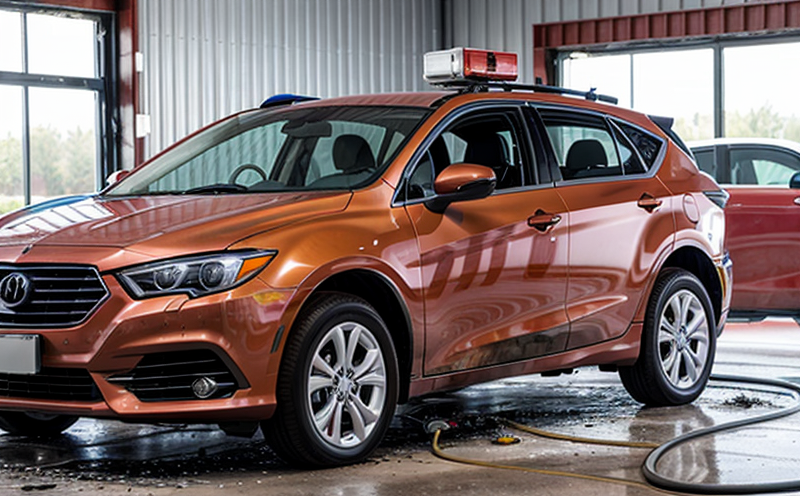SAE J369 Flammability Testing of Automotive Seats
The SAE J369 flammability testing standard is a critical requirement in automotive safety, ensuring that the materials used in seats do not pose a significant fire hazard. This test is essential for meeting regulatory requirements and enhancing passenger safety during vehicular accidents.
Automotive seating materials are exposed to various stressors including friction from movement, mechanical abrasion, and exposure to high temperatures. These conditions can lead to rapid ignition if the material has low flame resistance properties. SAE J369 provides a standardized method for assessing the flammability of these materials under controlled laboratory conditions.
The testing procedure involves placing a small flame source on the specimen and measuring both the time taken for the fire to start and extinguish, as well as the total heat released during this process. The results are then compared against predefined thresholds set by SAE J369. Compliance with these standards ensures that automotive seats meet safety regulations and contribute to overall vehicle performance.
By conducting rigorous flammability tests per SAE J369, manufacturers can ensure their products comply not only with national but also international standards such as ISO 12277-5:2018. This consistency across different markets helps streamline production processes and reduces the risk of non-conformance.
The importance of this testing cannot be overstated; it plays a vital role in preventing fires within vehicles which could otherwise lead to severe injuries or fatalities. Furthermore, meeting these standards can enhance brand reputation by demonstrating commitment to safety and quality control practices among customers.
Why It Matters
The SAE J369 flammability test is crucial for ensuring passenger safety in the event of a car accident. The primary goal is to prevent ignition and spread of fire within the vehicle, which could result from various factors including friction between components or exposure to high temperatures during impact.
- Reduces risk of injury due to burns
- Meets regulatory requirements imposed by authorities worldwide
- Promotes brand reputation through adherence to safety standards
- Avoids potential legal liabilities associated with product defects or non-compliance issues
Industry Applications
The SAE J369 flammability test is widely used in the automotive industry, particularly for testing materials intended to be used in seats. This includes not only upholstery but also any foam or fabric components that might come into contact with passengers during normal use.
Use Cases and Application Examples
- Testing of seat covers made from synthetic materials like polyester, polypropylene, or blends thereof
- Evaluation of foam padding used in seating areas for its flammability characteristics
- Determining the suitability of new upholstery designs before their introduction into production lines





